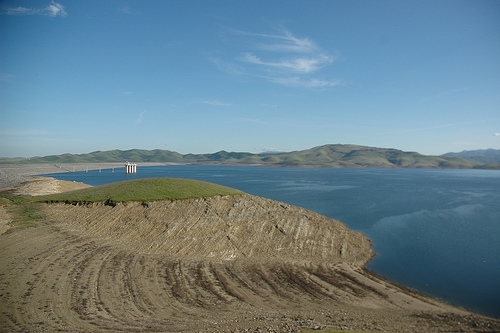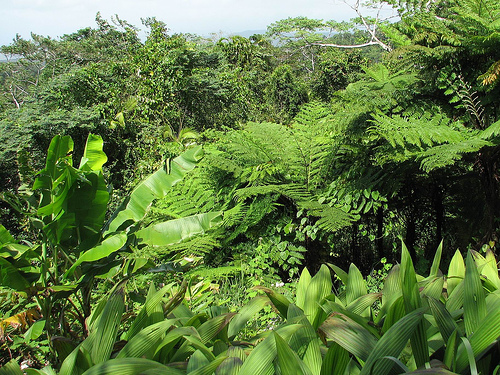NASA just released a disturbing report on California’s shrinking water supplies:
New space observations reveal that since October 2003, the aquifers for California’s primary agricultural region — the Central Valley — and its major mountain water source — the Sierra Nevadas — have lost nearly enough water combined to fill Lake Mead, America’s largest reservoir. The findings, based on data from the NASA/German Aerospace Center Gravity Recovery and Climate Experiment (Grace), reflect California’s extended drought and increased rates of groundwater being pumped for human uses, such as irrigation.
Combined, California’s Sacramento and San Joaquin drainage basins have shed more than 30 cubic kilometers of water since late 2003, said professor Jay Famiglietti of the University of California, Irvine. A cubic kilometer is about 264.2 billion gallons, enough to fill 400,000 Olympic-size pools. The bulk of the loss occurred in California’s agricultural Central Valley. The Central Valley receives its irrigation from a combination of groundwater pumped from wells and surface water diverted from elsewhere.
“Grace data reveal groundwater in these basins is being pumped for irrigation at rates that are not sustainable if current trends continue,” Famiglietti said. “This is leading to declining water tables, water shortages, decreasing crop sizes and continued land subsidence. The findings have major implications for the U.S. economy, as California’s Central Valley is home to one sixth of all U.S. irrigated land, and the state leads the nation in agricultural production and exports.”
 The San Luis Reservoir in California. Photo courtesy Wonderlane via FlickrThat news spells nothing other than crisis for the nation’s veggie basket. Even worse, the researchers pointed out that a new California law will only exacerbate the problem since it restricts the amount of water drawn from other sources. But the really bad news comes when one of the researchers used the “I” word with regards to California. Naturally, I’m talking about India.
The San Luis Reservoir in California. Photo courtesy Wonderlane via FlickrThat news spells nothing other than crisis for the nation’s veggie basket. Even worse, the researchers pointed out that a new California law will only exacerbate the problem since it restricts the amount of water drawn from other sources. But the really bad news comes when one of the researchers used the “I” word with regards to California. Naturally, I’m talking about India.
The California results come just months after a team of hydrologists led by Matt Rodell of NASA’s Goddard Space Flight Center, Greenbelt, Md., found groundwater levels in northwest India have declined by 17.7 cubic kilometers per year over the past decade, a loss due almost entirely to pumping and consumption of groundwater by humans.
And trust me when I say that, as beautiful and wondrous a country as India is, agriculturally speaking you do not want to go there. NPR did a series of startling reports last spring on the collapse of India’s agricultural sector in the northwestern region of Punjab, the country’s “bread-basket,” caused in large part by the overuse of groundwater for irrigation. And this is what it looks like when you run out of groundwater:
[F]armers have pumped so much groundwater to irrigate their crops that the water table is dropping dramatically, as much as 3 feet every year.
So farmers like Sandeep keep hiring the drilling company to come back to their fields, to bore the wells ever deeper — on this day, to more than 200 feet.
…Another side effect of the groundwater crisis is evident at the edge of the fields — thin straggly rows of wheat and a whitish powder scattered across the soil.
The white substance is salt residue. Drilling deep wells to find fresh water often taps brackish underground pools, and the salty water poisons the crops.
So forgive me for panicking when I hear scientists comparing California and India’s groundwater situation. Remember that California supplies the rest of the country with about half of all fruits, nuts, and vegetables. Perhaps we should start getting some more of those New England winter greenhouses up and running?



